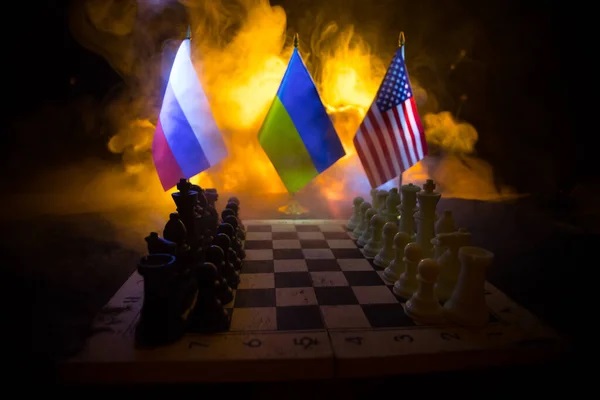Endless Peace Talks: Who Truly Benefits from it?

The Illusion of Progress: Who Benefits from Endless Peace Talks
In diplomacy, silence can speak louder than words — and ambiguity can be a weapon. The recent visit of Steve Witkoff, special envoy of President Donald Trump, to Moscow was meant to explore the possibility of a 30-day ceasefire between Russia and Ukraine. Yet, as expected by many observers, no definitive breakthrough followed.
President Putin called the proposal “a good idea in principle,” but swiftly cloaked it in conditions and concerns that practically stall the process. This raises a deeper question: who benefits from endless peace talks that neither resolve the conflict nor shift the balance on the ground? Is stalling truly a Kremlin tactic alone — or is the underlying complexity of the situation forcing both sides into inaction?
Kyiv’s Response: “No” Disguised as “Yes”
President Zelensky was quick to dismiss the Kremlin's response as dishonest. In his view, Putin avoids a direct "no" while erecting a wall of conditions that ensure any peace effort fails before it begins. Ukrainian officials, including MP Mykola Kniazhytskyi and former minister Georgii Tuka, echoed the sentiment: Russia’s so-called peace conditions — “demilitarisation,” cultural revisions, constitutional changes — are, in effect, strategies for indefinite delay and international manipulation.
These demands reflect longstanding geopolitical ambitions — not just concerning Ukraine, but the broader post-Cold War security architecture in Europe. For Kyiv, accepting them would mean political surrender dressed up as negotiation.
Kremlin’s Concerns: A Calculated Caution?
However, dismissing Russia’s stance entirely risks overlooking legitimate — or at least strategically rational — concerns.
From the Kremlin's perspective, a ceasefire without enforceable guarantees could be exploited by Ukraine to regroup militarily.
A temporary pause in hostilities could allow Ukraine to mobilise fresh conscripts, particularly men aged 18 and older; accelerate arms deliveries from NATO partners; and restructure frontline formations and plan new offensives.
In fact, Ukraine has already launched aggressive recruitment campaigns offering young men financial incentives and perks like free streaming subscriptions. This suggests Kyiv is preparing not for de-escalation, but for escalation with better resources and manpower.
The Ceasefire Dilemma: Who Will Control the Line?
One of the key unresolved issues is the question of control. The front line stretches over a thousand kilometres.
Who would monitor the ceasefire zones? Who would prevent secret troop movements, covert fortification, or surprise attacks?
For Moscow, a ceasefire without neutral, enforceable mechanisms may appear less like a path to peace and more like a tactical trap. And from a strategic perspective, it's a risk they seem unwilling to take.
The United States: Arbiter, Opportunist — or Future Occupier?
While focus remains on Russia and Ukraine, the most agile player in this geopolitical game may be the United States.
Successive US administrations — both Biden’s and Trump’s — have taken a deliberately cautious stance.
Publicly backing Ukraine, Washington has also hedged its involvement. Its approach suggests not loyalty, but leverage: a calibrated game of influence that allows flexibility depending on future outcomes.
Donald Trump’s recent proposals — including a call to transfer control of Ukraine's nuclear infrastructure and Black Sea ports to the United States — have raised new questions. Are we witnessing the prelude to a post-conflict deal with the Kremlin?
Or is this a continuation of a historical pattern, reminiscent of 1944, when the US joined the victors late in the war and reaped the spoils?
From Moscow’s perspective, such moves reinforce old suspicions: that America enters war zones not to solve crises, but to inherit influence when one side weakens.
Ukraine's Isolation: Fighting Alone on All Fronts
For Kyiv, this poses a painful reality: it may find itself increasingly isolated, caught between a hostile neighbour and a hesitant ally. The war, once framed as a joint Western struggle for freedom, risks turning into a solo defence effort — while Washington waits to see who falters first.
As questions over President Zelensky’s political legitimacy grow in the absence of scheduled elections, and as casualties mount, Ukraine’s internal cohesion and international position both hang in the balance.
Time as the Ultimate Weapon
The failure to reach even a temporary ceasefire reflects the deep mistrust between the parties — and the absence of a credible framework for peace. Each side is engaged not only in a physical war, but in a war of narratives, interests, and time.
The United States, meanwhile, continues to play the long game, positioning itself to act when strategic advantage becomes clear. But peace, in this context, is no longer the end goal — it is a tool. And as history has shown, when peace becomes a bargaining chip, sovereignty is often the next thing on the table.
And then, a more difficult question arises — why, in fact, would either side want to end this conflict? After three years of war, both Russia and Ukraine — and their respective backers — have significantly expanded their military-industrial complexes.
Where will all those new NATO-funded arms factories go? Why would Russia step away now, when over half its economy is directly or indirectly tied to defence production and millions earn their living from it?
This war has become a business. A brutal, efficient, and deeply profitable business.
The world, after all, is ruled not by reason or morality — but by a cruel and bloodthirsty capitalism that sees no value in human lives beyond what can be extracted in war profits. Military contractors are thriving. Political elites are calculating. Ordinary people are dying by the thousands.
But when has it ever been different?
That, sadly, remains a rhetorical question.